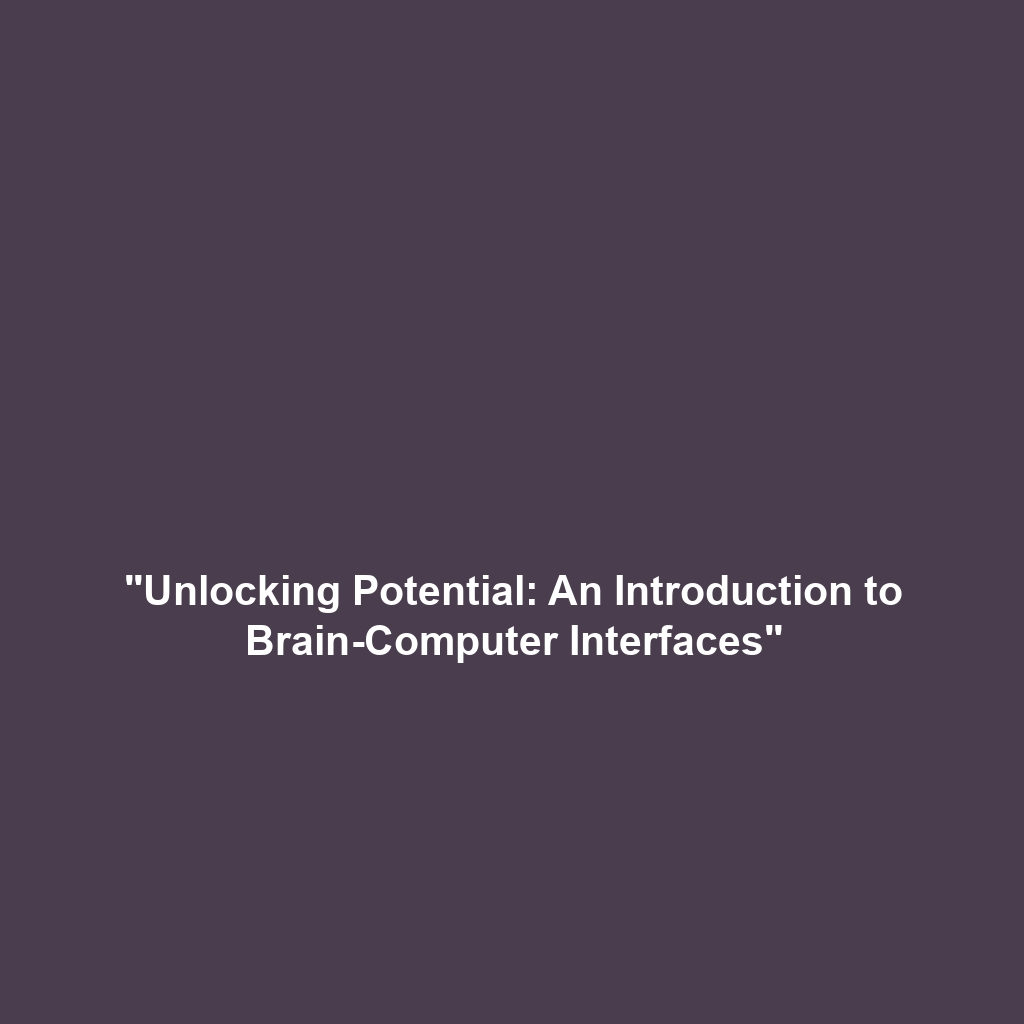Introduction to Brain-Computer Interfaces
Brain-Computer Interfaces (BCIs) represent groundbreaking technology that allows individuals to control devices directly with their brain signals. As machines become increasingly intertwined with human activity, the significance of brain-computer interfaces expands dramatically. This article serves as an introduction to BCIs, detailing their relevance in neurotechnology, healthcare, and beyond. Understanding these systems is essential to grasping the future of communication and interaction between humans and machines.
Key Concepts
To fully appreciate brain-computer interfaces, it’s vital to grasp the fundamental concepts and principles that underpin this novel field. Major concepts include:
- Signal Acquisition: Gathering electrical signals from the brain through electrodes.
- Signal Processing: Interpreting and translating brain signals into actionable data.
- Device Control: Enabling individuals to manipulate external devices using their thoughts.
These elements collectively highlight how introduction to brain-computer interfaces is pivotal within the broader category of BCIs, linking neuroscience with technology.
Applications and Real-World Uses
The applications of brain-computer interfaces are vast and impactful. Practical uses include:
- Medical Rehabilitation: BCIs assist patients with motor impairments to regain control of their movements.
- Communication Devices: Providing individuals with speech disabilities tools for communication by interpreting brain signals.
- Gaming: Enabling immersive gaming experiences through neural controls.
These examples illustrate how introduction to brain-computer interfaces is used in real-world applications of BCIs and the transformative potential these technologies hold.
Current Challenges
Despite their potential, the field of brain-computer interfaces faces several challenges, which include:
- Signal Noise: Electrical interference can hinder accurate signal interpretation.
- Invasiveness: Some BCIs require surgical implantation, posing risks to patients.
- Ethics and Privacy: The implications of reading brain activities raise ethical concerns.
Addressing these challenges of brain-computer interfaces is crucial for further advancement in this exciting field.
Future Research and Innovations
Looking ahead, numerous innovations in brain-computer interfaces promise to reshape their application significantly. Areas of future research include:
- Non-Invasive Techniques: Development of external devices that can accurately read brain signals without surgery.
- Enhanced Machine Learning: Leveraging AI to improve interpretation of neural data and user experience.
- Brain-Machine Integration: Innovations aimed at better integration of BCIs with existing technologies.
These potential breakthroughs will undoubtedly influence the future of brain-computer interfaces and how individuals interact with technology.
Conclusion
In summary, the introduction to brain-computer interfaces reveals their profound potential and significance in bridging the gap between human thought and machine interaction. As research progresses and challenges are addressed, the prospects for BCIs grow immensely. To stay informed on advancements in this captivating field, explore related topics on our website.
